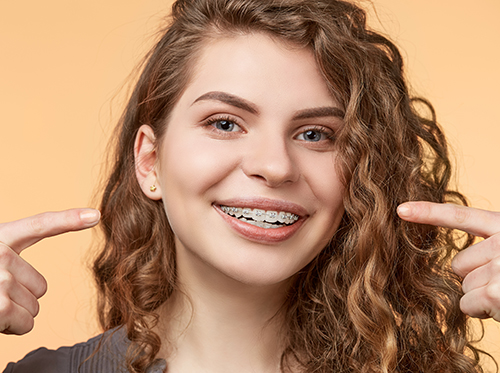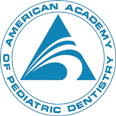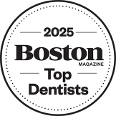September 26th, 2018

If you’re thinking about investing in braces, there are a few things you should take into consideration. It’s normal for adult teeth to come in crooked, which is why braces are a common solution for teens and adults who desire a beautiful smile.
Your dentist may recommend orthodontic treatment if crooked teeth begin to affect your or your child’s oral health. But many factors go into whether braces would be right for you or your child, or not.
Modern orthodontic treatments offer numerous options for the typical issues people face, such as crooked teeth or jaw alignment problems. Malocclusion, otherwise known as having a bad bite, is common in patients with crooked teeth.
Braces can be worn for a short period of time to correct uneven jaw alignment, which may be the cause of an underbite or overbite in patients. A retainer is worn afterward to keep the newly straightened teeth in place.
Now that one in five braces wearers is an adult, grownups have a variety of braces options. Braces are typically left on for at least one year to straighten teeth effectively. Options can include regular metal braces, clear braces, or Invisalign® aligners.
If you’re an adult and would prefer a discreet treatment, clear braces or Invisalign retainers are your best options. Drs. Cartsos and Zavras will be able to provide you with a recommended best route of treatment depending on what you’re trying to accomplish and what your budget is. Before getting braces, it’s worth learning about all the methods of treatment available at Convivial Dental.
Be sure to contact your insurance company before your appointment to see if orthodontic treatments are covered; otherwise, you may want to plan to pay for out-of-pocket costs. If you have questions regarding the types of treatment we provide for our patients, call our Chestnut Hill, Massachusetts office for more information.
September 19th, 2018

Incognito™ lingual braces offer the effectiveness of traditional braces minus the look of a mouth full of metal. They’re placed on the back of your teeth and won’t be visible to others unless you have widely spaced teeth. Drs. Cartsos and Zavras would love to help you determine if this would be a good treatment option for you.
Benefits of Incognito Lingual Braces
For many patients, the biggest benefit of Incognito lingual braces is that they are rarely perceived by anyone. Patients are able to talk and smile without feeling self-conscious about wearing braces.
Another perk is that they are just as effective as standard braces. Patients enjoy the pleasing aesthetic aspect without compromising on time or results! Lingual braces are also a great option for patients who have plastic sensitivities or can’t wear other types of clear braces.
Who can get lingual braces?
Although many patients qualify for lingual braces, not everyone is a good candidate. The best candidates are teenagers and adults with normal-sized teeth and no bite issues. Children often have smaller teeth, so lingual braces may not be suitable.
If you’re thinking about correcting your smile but don’t want traditional braces, talk to Drs. Cartsos and Zavras or visit our Chestnut Hill, Massachusetts office today. We can determine whether lingual braces are the right choice for you, so you can have the smile you’ve always wanted!
September 12th, 2018

These days, it’s become more common to see adults at our office getting their teeth straightened with Invisalign clear aligners . . . that is, if you can see them! Whether they are seeking to overcome the stigma that “braces are just for kids,” or simply want straighter teeth without a mouth full of metal, Invisalign is an effective and easy solution.
According to the American Association of Orthodontists, from 1994 to 2010 the number of adults 18 and older who request braces increased by 58 percent: from 680,000 to 1.1 million a year. Many adults enjoy how discreet the aligners are and that the user doesn’t need to avoid any foods or make dietary changes the way you would with traditional braces. Also, each treatment is unique to the patient.
With an Invisalign treatment, you can expect to enjoy the following benefits over traditional braces:
- The total treatment time is more precise with Invisalign because your treatment is modeled by a computer. Traditional braces depend more on an estimate and aren’t as exact.
- You’ll make fewer trips to our Chestnut Hill, Massachusetts office, since you’re able to change your trays on your own every few weeks or whatever is prescribed.
- Without brackets to place over your teeth, there’s less risk to the health of your tooth enamel.
- Invisalign aligners are clear and practically invisible, so most people won’t even know you’re wearing them!
If you’re interested in Invisalign as a treatment option, please let Drs. Cartsos and Zavras know. We’d be happy to help you on your journey to a straighter, healthier smile!
September 5th, 2018

These days, Americans everywhere are putting greater emphasis on health and self-improvement, and more people are seeking orthodontic treatment to improve their smile. September happens to be Self-Improvement Month, and our team at Convivial Dental knows that orthodontic treatment is an investment in self-improvement that will provide benefits for a lifetime. Recent advances in orthodontia now make treatment more comfortable for many interested in obtaining that beautiful smile.
Not only does orthodontic treatment give you a beautiful smile, it can also benefit your dental and general health. If teeth are poorly aligned, removing plaque and tartar by brushing and flossing may be difficult. A bad bite may result in fractured or excessively worn tooth surfaces, and the extra stress caused by a bad bite may even result in problems with your jaw joints.
If you’ve been thinking about getting that perfect smile, Drs. Cartsos and Zavras would love to have you visit for an initial consultation. Please give us a call to schedule a visit! See you soon!











